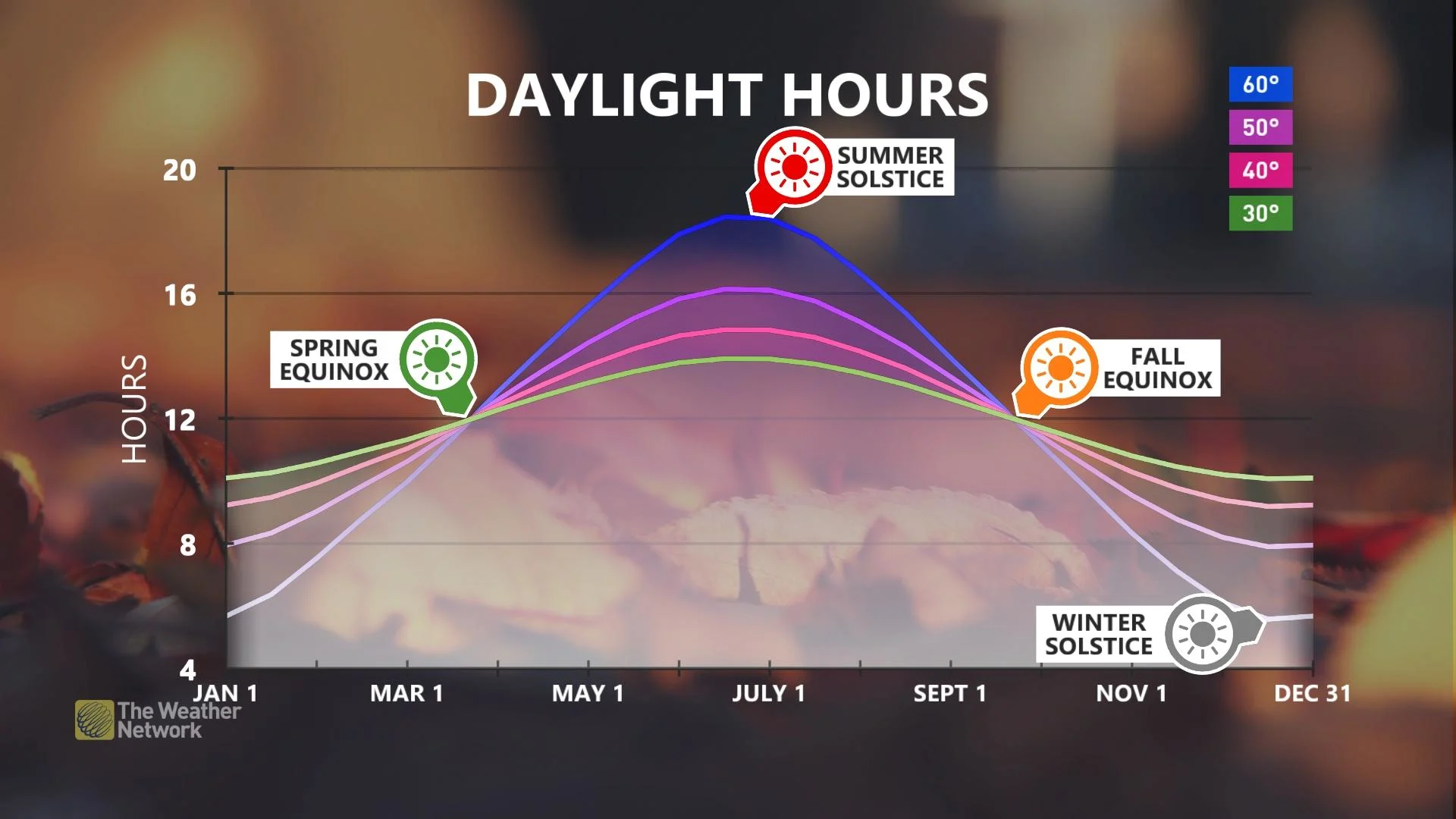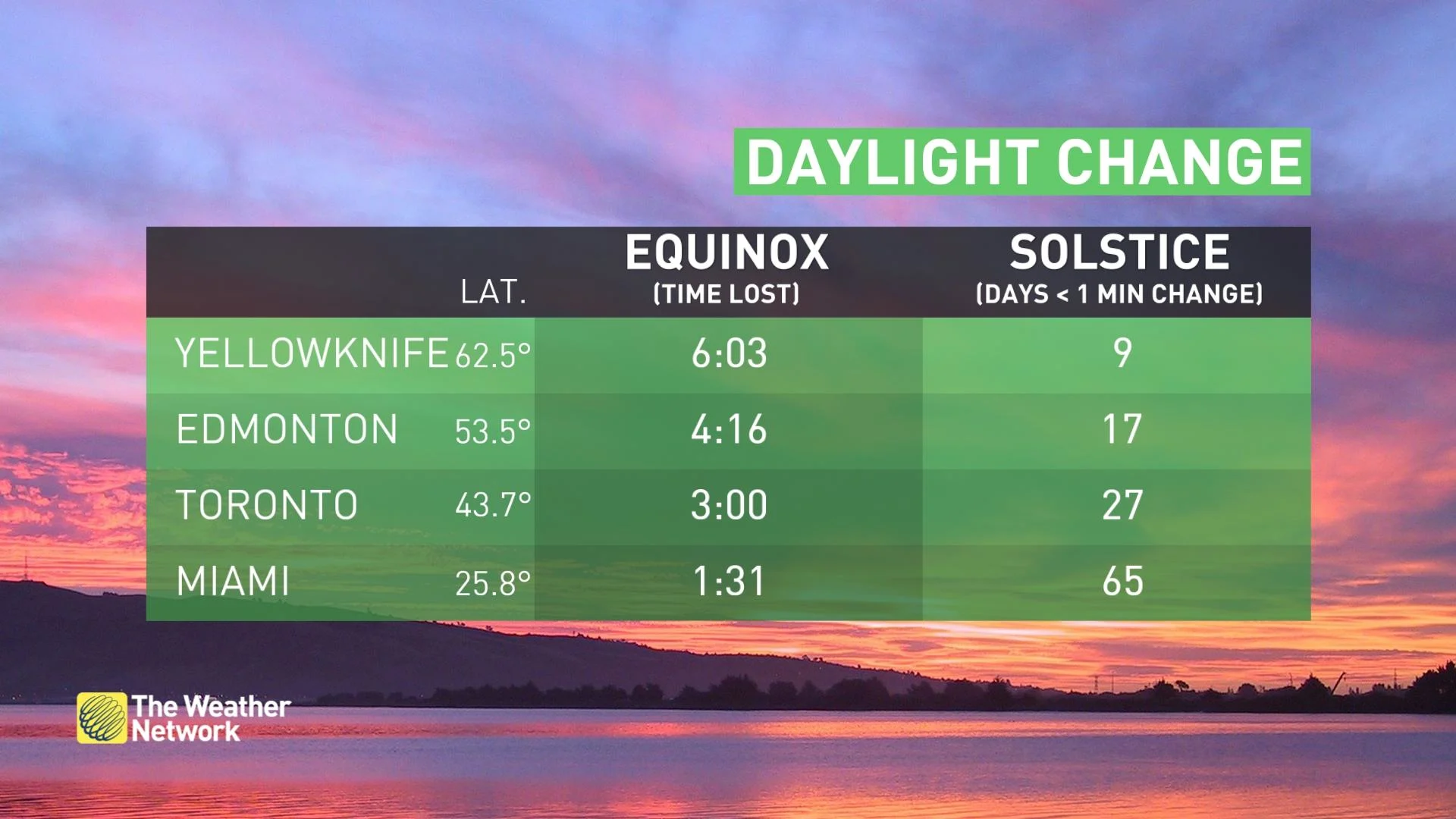
Fall Equinox: Why autumn feels like it's in a rush to get here
Whether you’re trying to squeeze in nine holes of golf after work or noticing the lights coming on before your soccer game is over, we’re all fighting a losing battle against shrinking daylight hours.
Do you ever feel like autumn takes hold really fast once we pass the Labour Day long weekend?
Whether you’re trying to squeeze in nine holes of golf after work or noticing the lights coming on before your soccer game is over, we’re all fighting a losing battle against shrinking daylight hours.

SEE ALSO: Spring Equinox: Why some cities gain sunlight faster than others
September sees the greatest daily change in daylight hours as we approach the fall equinox. At this time, every point on Earth experiences 12 hours of daylight and darkness. Following the fall equinox, the longer days shift to the Southern Hemisphere while we slide into our shorter days.
The change is very evident the farther north you venture. In terms of Canadian cities, Yellowknife, N.W.T., has the most ground to make up between the summer and winter solstice -- transitioning from 19 hours of daylight to a mere five hours.

This results in a steeper slope and greater rate of change at the equinox, losing more than six minutes of daylight per day.
The process is more subtle as you move south. In Toronto, the fastest rate of change is three minutes per day thanks to a less amplified path. Ontario’s capital only sees a 6.5-hour range from its shortest to longest day -- a far cry from Yellowknife’s 14 hours.

Thumbnail courtesy of Oscar Wong. Moment. Getty Images.










